清宫镜鉴文化与典藏 6 K* c3 w3 X: S' H* I: X/ ~' e: C
The collection and culture of mirrors at Qing court
& W' w$ G& |" \6 E- I. z% j
圖文摘录自 台北国立故宫博物院
5 s/ ]% l, r! u$ T* P. C g9 l
8 S9 M: q& C6 { E揽镜之趣 镜照与生活
Adorning the beauty in mirrors Reflections of mirrors in life
/ b$ E" ?$ [5 b2 q, N: Y+ B6 }9 S) r
2 t( I/ ~! B# m) E+ V- E: N
清代铸镜业虽发达,典雅秀丽的汉唐古铜镜仍是宫廷皇族喜爱的照容用具。除为古镜配制各式镜架,更转化材质与功能,将砚台做成唐镜的菱花形状,为书房几案增添美感与情趣。
Despite the flourishing of cast bronze mirrors in the Qing dynasty, the classical beauty of archaic bronzes from the Han to Tang dynasties continued to be the choice for use among members of the imperial family. Not only were many stands created for these ancient mirrors,even inkstones were also made in the shape of Tang lobed mirrors to add beauty and interest to the scholar’s studio table.
8 u) b! T+ u5 D7 r) s- M- x% g* D* b: d7 ^" Z
" v5 O. d4 h% A& m4 M% D" |
康熙时期,西洋传教士便以欧洲玻璃镜及镜盒作为进献的贵重礼物,深得皇帝喜爱。1696年,康熙皇帝设立玻璃厂,致力生产包含玻璃镜面在内的玻璃器,一别过去两千多年来以铜铸镜的传统。清宫造办处以玉、铜、木、牙骨及珐琅画片等多样化材质为玻璃镜配制镜框,开发出多种既有西洋情调又富含清宫审美意味的照容镜。
In the Kangxi reign, Western missionaries brought European glass mirrors and boxes with mirrors to China and offered them as precious tribute to the court, much to the appreciation of the emperor. In 1696, the Kangxi emperor had a glass factory established that strived to produce glassware, including glass mirrors, marking a departure from the tradition of bronze mirrors in Chinese culture over more than two millennia.The imperial workshops at the Qing court had frames with a variety of materials, such as jade, bronze, wood, ivory, and enamel, produced for its glass mirrors, also adding new and different Western elements that enriched the aesthetics of mirrors used at the Qing court.
8 ^" _7 r2 u9 j
揽镜之趣 Adorning the beauty in mirrors
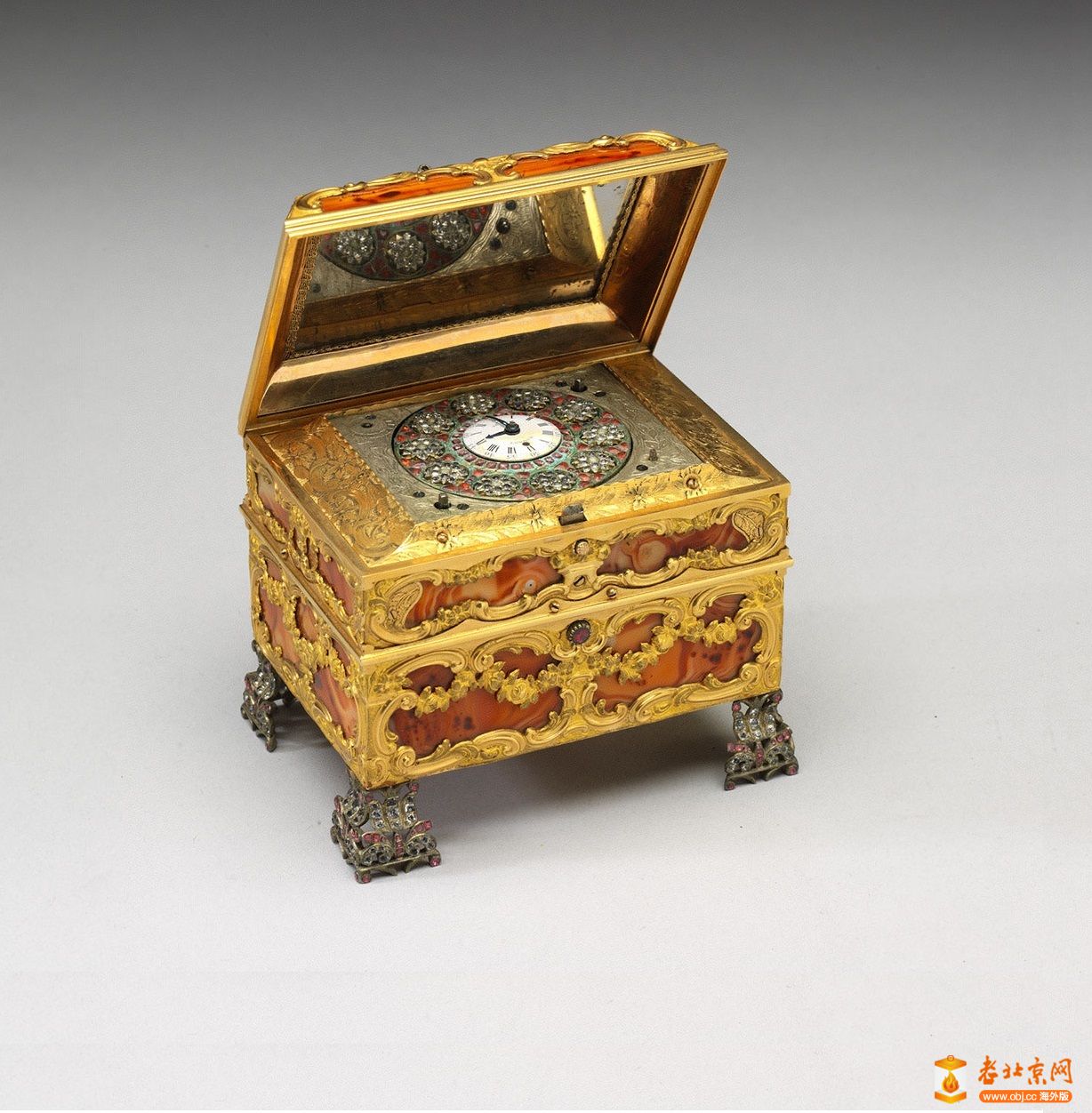 + a, y/ J5 i% ]- Z' v( H
+ a, y/ J5 i% ]- Z' v( H
, U) I0 q/ j0 ~" O/ a0 M" U9 _- k1 m7 b1 y( s# R" C
英国 十八世纪 钟表化妆匣
长6.3公分 宽8.9公分 高10公分
- \8 k" l7 e2 B; [Makeup Case Inlaid with a Timepiece
England, 18th century
p! D5 T, Y8 HLength: 6.3 cm, width: 8.9 cm, height: 10 cm
( s) |+ b0 [* H) Y' |2 s3 w# K$ g/ d6 z
; ]- `7 l, ]$ B& J此为JamesCox制作多功能双层小提盒,整体金属花叶纹边框嵌玛脑,提把与四足嵌饰各色宝石,第一层打开盖内有玻璃镜,盒内为嵌宝石钟表,表面有机械装置可转动;第二层打开则为化妆匣,盒内有五个玻璃金属盖小罐与各种工具,盖内画有着西洋服饰的中国仕女图,显示此盒是因应中国市场而产制。
% [- O/ k& y- k; d# B8 [+ k: c! t* TThis is a small dual-level multifunctional box made by James Cox out of metal fashioned into a flower-and-leaf design and inlaid with agate. The handle and four legs are inlaid with semi-precious gems, and the first level opens up to reveal a glass mirror. Inside is a gem-inlaid timepiece with a mechanical installation that moves. Opening the second levelreveals a vanity mirror, and inside are five small glass containers with metalcaps and various accessories. The inside cover is painted with a scene of Chinese ladies wearing Western clothing, indicating this piece was probably made for the Chinese market.
- K, H0 |, _, u. \0 J
揽镜之趣 Adorning the beauty in mirrors
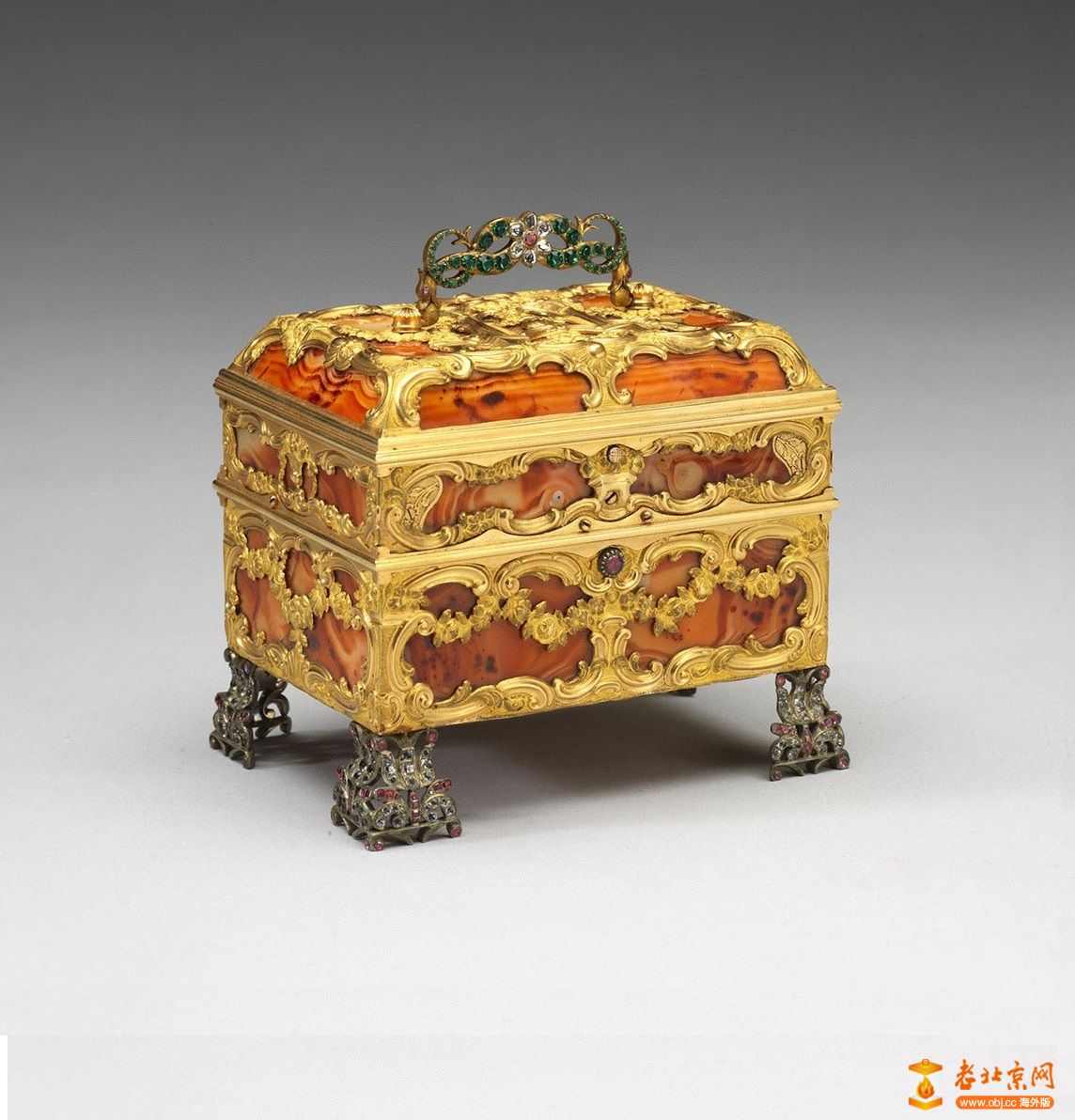
: W1 l, w) O( [ S. G) ]0 V5 h5 q3 X Q3 H; T: S
揽镜之趣 Adorning the beauty in mirrors
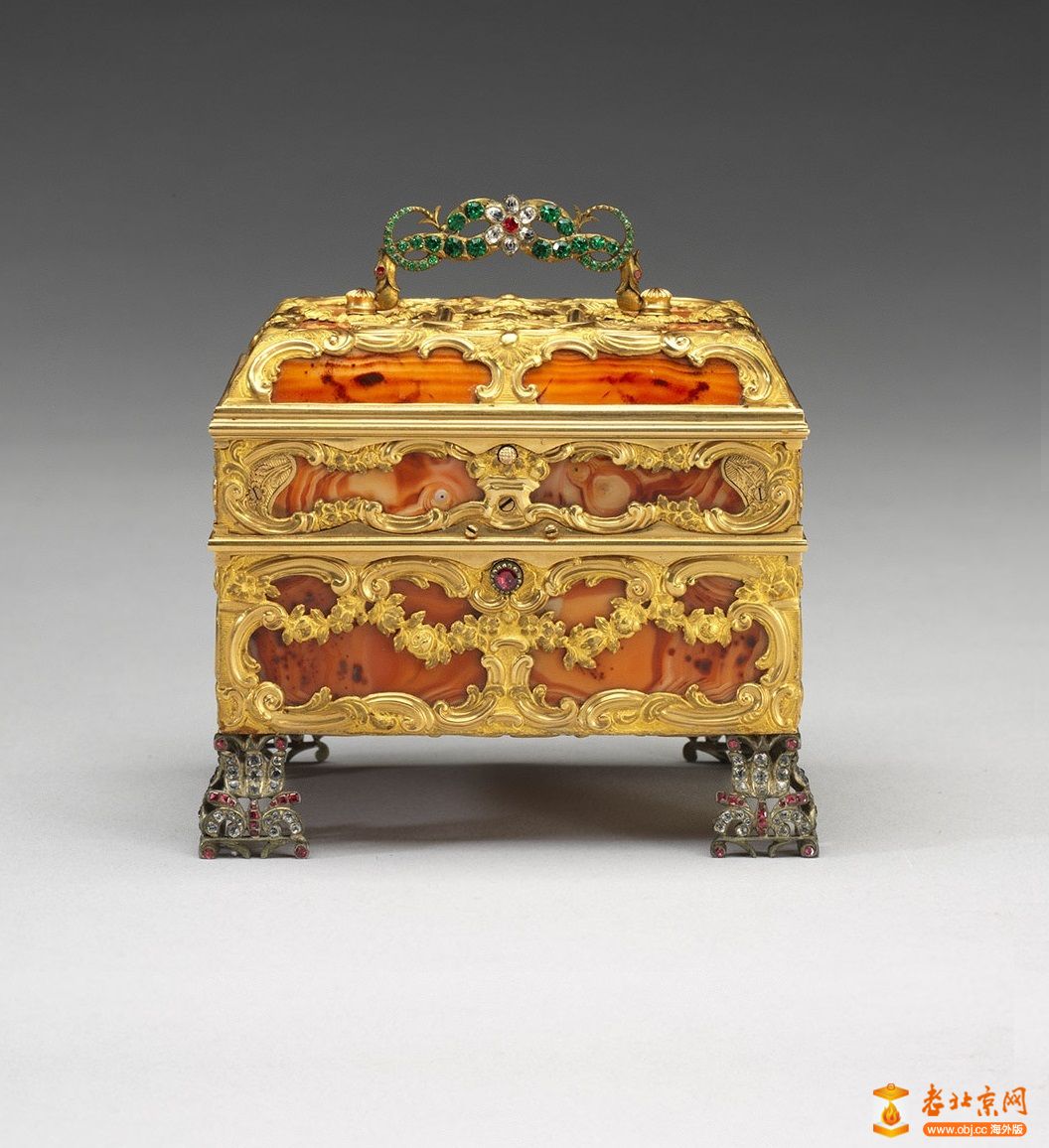
) ?6 r' R; O" s/ g0 h: z) u7 C5 z3 ?8 Q
揽镜之趣 Adorning the beauty in mirrors
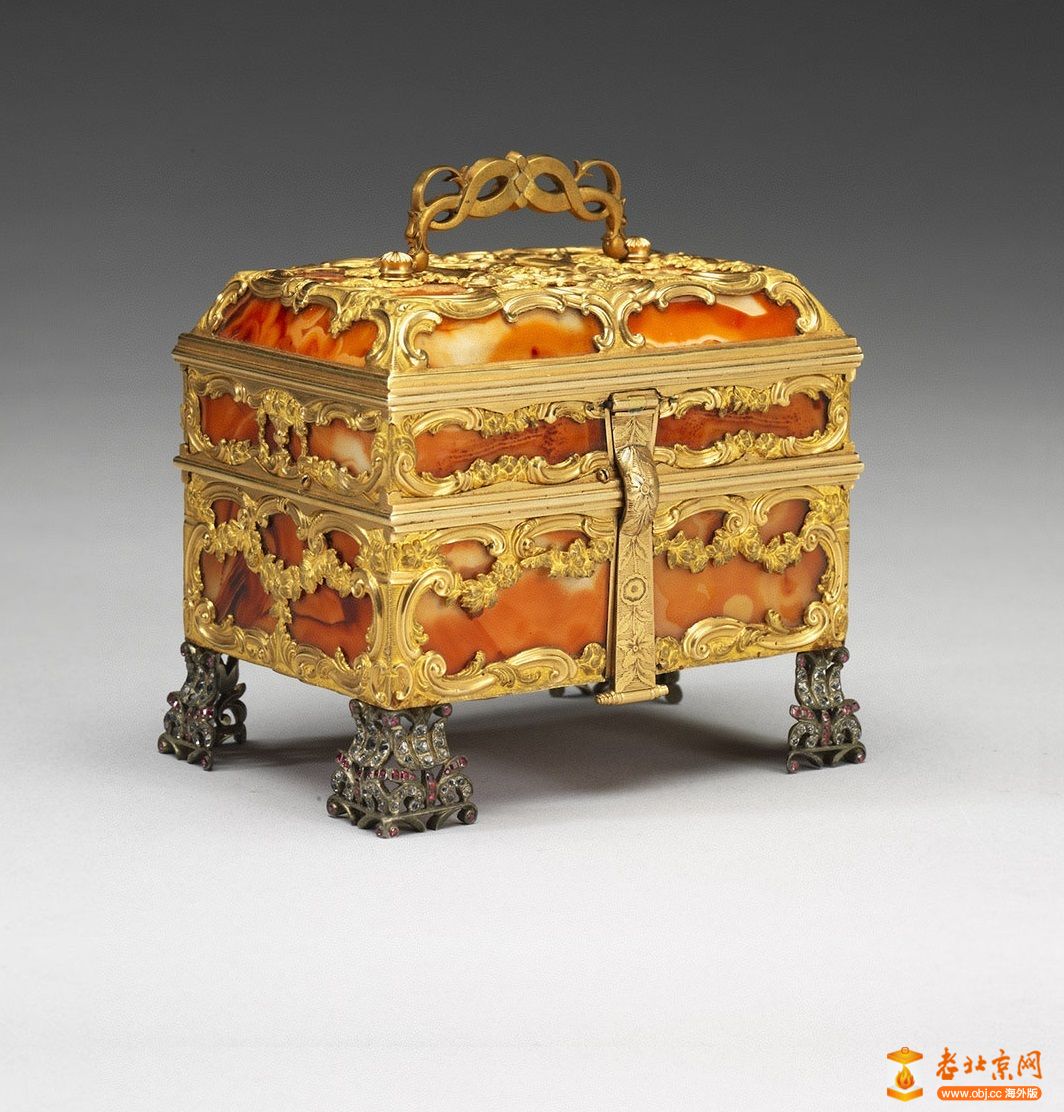
2 W, m* G& {* |5 Q6 L
$ s% ~9 I, M( [) i. s2 S
揽镜之趣 Adorning the beauty in mirrors
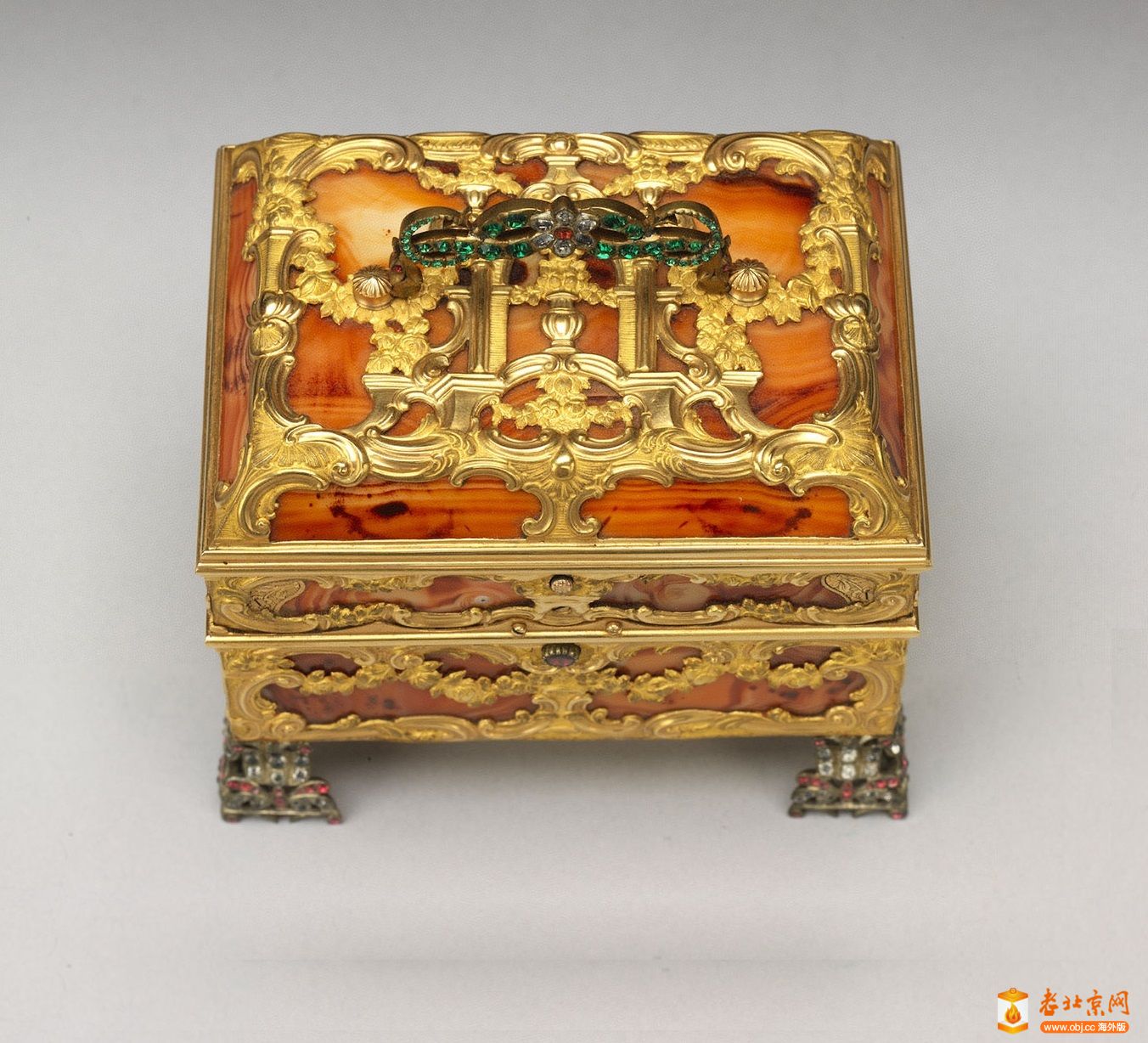 ' Y4 U8 \: `5 Q+ y! q* I* N
' Y4 U8 \: `5 Q+ y! q* I* N
' n3 T8 Z6 c, G; ?9 D
揽镜之趣 Adorning the beauty in mirrors

! s$ e+ C" }( o2 u% x* I+ n4 o: w& y+ K
揽镜之趣 Adorning the beauty in mirrors
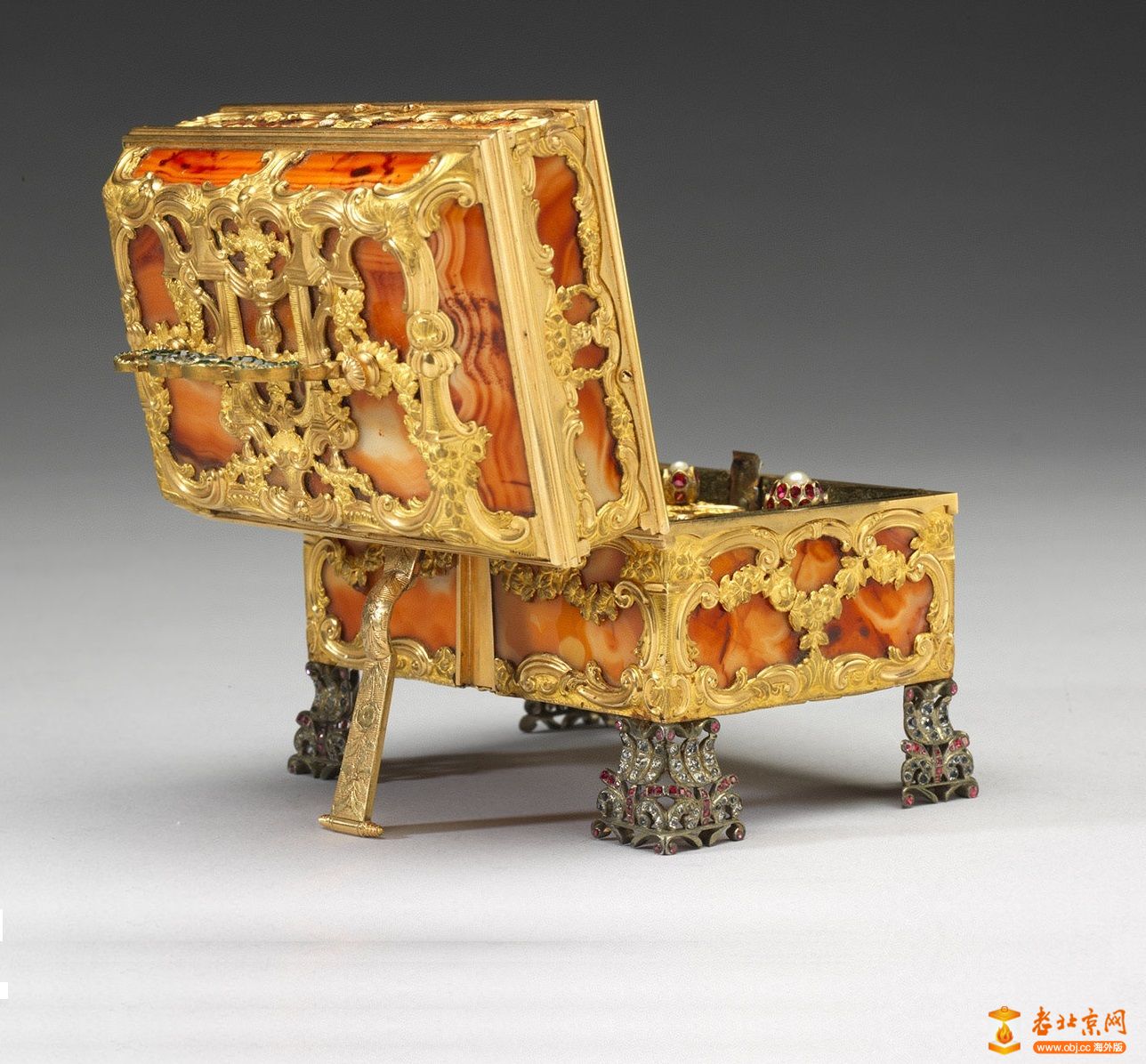
2 \3 r9 N9 r! z" `5 }
! n) y; B) Q) ]% O
揽镜之趣 Adorning the beauty in mirrors
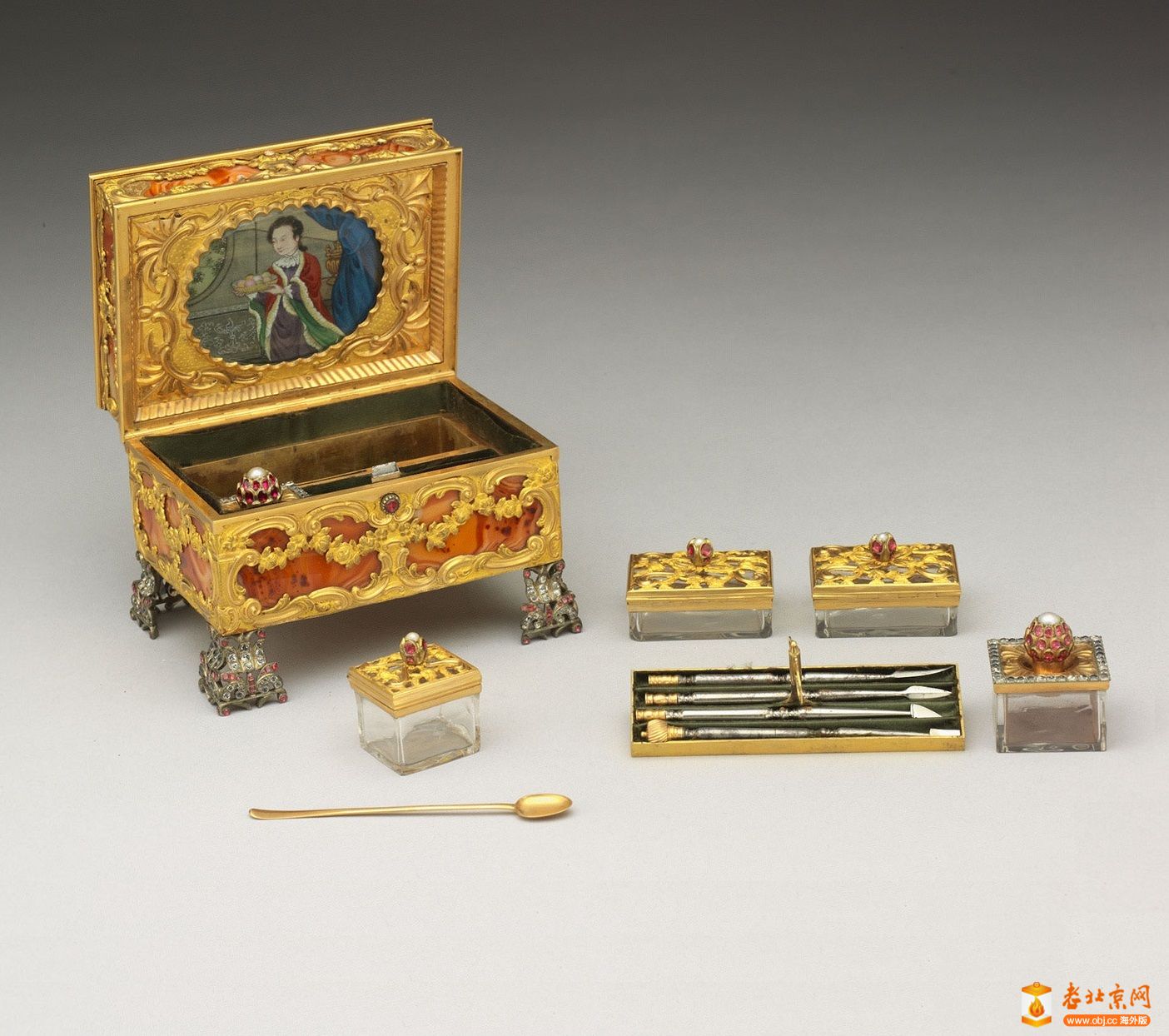
* ?9 A+ d: ?2 a, E3 ]1 p: x% }9 a
揽镜之趣 Adorning the beauty in mirrors
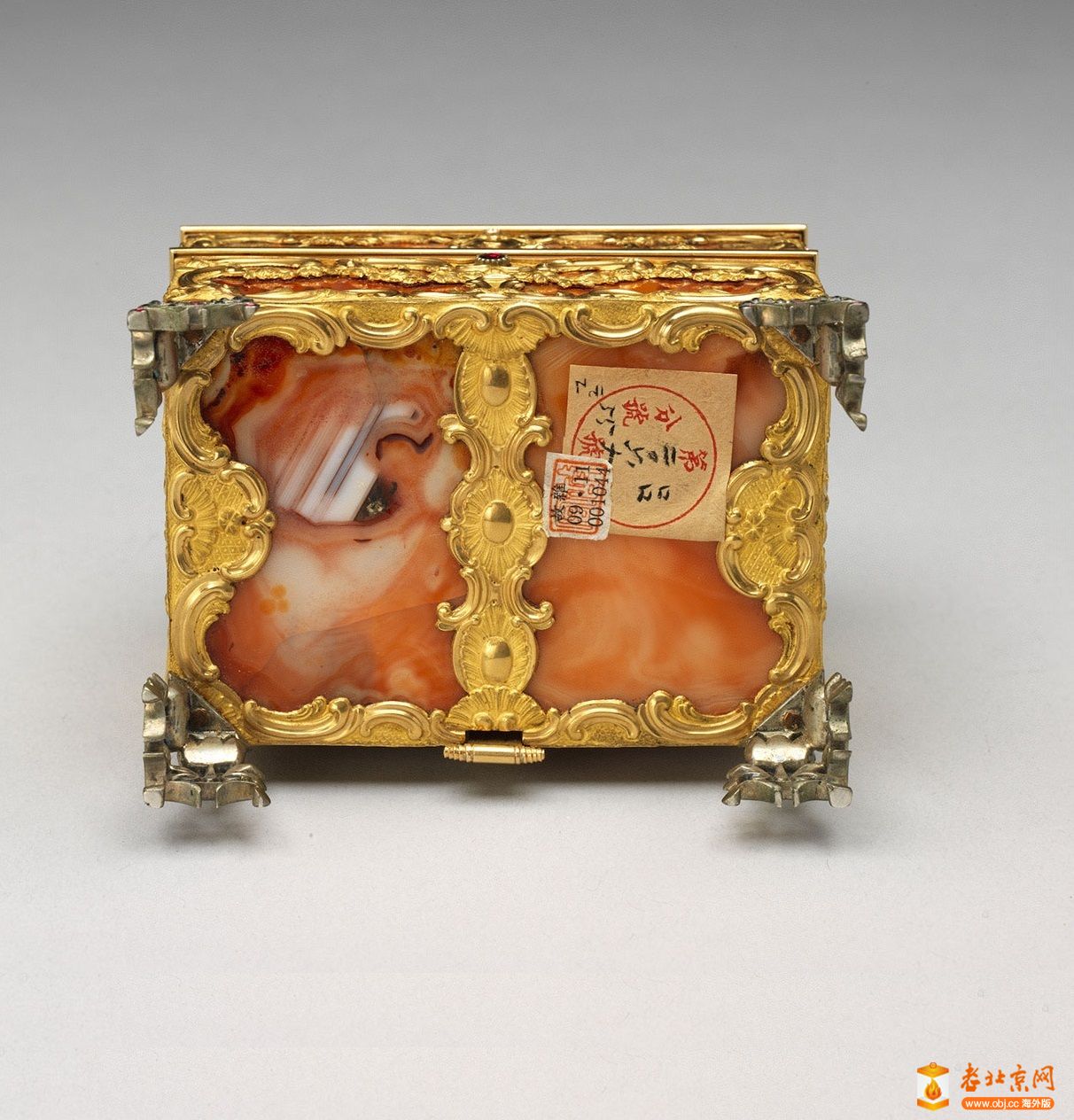
( x5 Y! e3 V B2 V! t6 M! ?8 A# {7 y
! \+ v8 u: s' P6 `
. e- a5 p8 ~+ e/ l& ^, g! v7 O) i9 B I
* h( q; `6 D6 o: G& }
4 a1 ?2 e% c7 F# g" |
& O- ~* V" ~* `( P& t! @4 @
4 {2 @$ }" M# ^9 Q$ E
* h. ]' F) r, [* g7 r7 m# ?" n' i2 c, [! w& i
) ]% e* J5 r; T2 K4 J6 C
% Q7 }" Z/ ?7 H1 I! g6 P7 w+ \
! Y4 p+ V, j" ^* Q& z9 m% ?5 D/ H( x9 `0 Z( L% j
& p+ X% X) g# c! O5 [' D